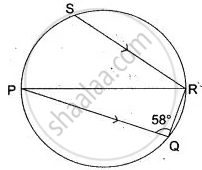Advertisements
Advertisements
Question
If a diameter of a circle bisects each of the two chords of a circle, prove that the chords are parallel.
Solution
Let O be the centre of a circle and AB, CD be the two chords.
Let PQ be the diameter bisecting chord AB and CD at L and M respectively.

L is the midpoint of AB.
So, OL ⊥ AB ⇒ ∠ ALO = 90°
Similarly,
∠CMO = 90°.
∠ ALO = ∠CMO
But these are alternate angles.
So, AB || CD ....Hence Proved.
APPEARS IN
RELATED QUESTIONS
AB and CD are two equal chords of a circle with centre O which intersect each other at right
angle at point P. If OM⊥ AB and ON ⊥ CD; show that OMPN is a square.
In the following figure, O is the centre of the circle. Find the values of a, b and c.

In the following figure, O is the centre of the circle. Find the values of a, b, c and d.
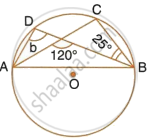
In the following figure, O is the centre of the circle. Find the values of a, b, c and d
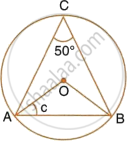
Given: ∠CAB = 75° and ∠CBA = 50°. Find the value of ∠DAB + ∠ABD.
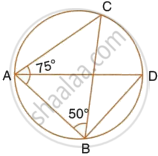
The line joining the midpoints of two chords of a circle passes through its center.
Prove that the chords are parallel.
The length of the common chord of two intersecting circles is 30 cm. If the diameters of these two circles are 50 cm and 34 cm, calculate the distance between their centers.
Given two equal chords AB and CD of a circle with center O, intersecting each other at point P.
Prove that:
(i) AP = CP
(ii) BP = DP
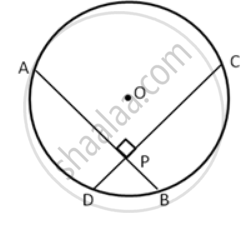
Two chords AB, CD of lengths 16 cm and 30 cm, are parallel. If the distance between AB and CD is 23 cm. Find the radius of the circle.
In the adjoining figure, PQ is the diameter, chord SR is parallel to PQ. Give ∠ PQR = 58°.
Calculate:
(i) ∠ RPQ,
(ii) ∠ STP ( T is a point on the minor arc)
